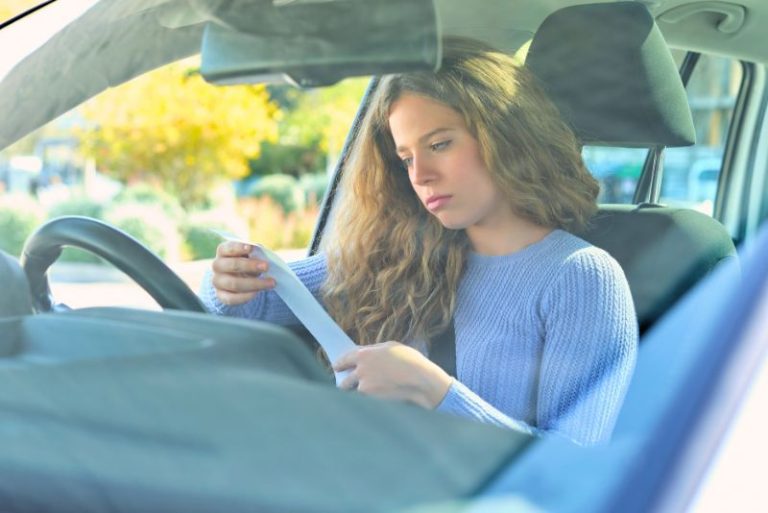After months of high inflation, house prices and overall costs, the more optimistic among us could say that things are looking up recently. Inflation has been decreasing, and wages are rising steadily. Still, it doesn’t mean that things aren’t still difficult for many households across the UK.
Although costs have levelled out, they are on average still higher than they were before the pandemic. And one unexpected area where you could be feeling the pinch is your motor. From fuel prices to clean air zones and insurance premiums, driving has fast become an expensive-yet-essential cost.
Let’s explore what’s fuelling these elevated costs, as well as how you can get more for your money.
Buying a car: new or second-hand?
For most people, a car is the second-largest purchase they will make, after a house, so it’s a big decision. And, whether it’s time to trade in your current motor for something new, you’re buying a car for the first time, or maybe adding to your family’s fleet, you want to make sure it’s the right investment.
Buying new, second-hand, or on finance are all options that affect the overall cost, but so too does the elevated level of inflation seen in recent months. New car prices have been on the rise, as manufacturing fell to levels not seen since the 1950s. This has made demand much higher than supply and made it more expensive to buy a new car. Compare these popular models and see for yourself how the prices have changed significantly in a short period of time.
| Car model | 2019 | January 2022 | November 2022 |
| Ford Fiesta ST Line 1.0 100hp | £17,415 | £20,770 | £22,530 |
| Nissan Qashqai Visia DIG-T 140 | £19,595 | £24,555 | £25,770 |
| Volkswagen Golf Life 110hp | £22,135 (old model – Golf Match) | £23,430 | £24,730 |
Production rates are slowly returning to normal, so it’s possible that the cost of a new motor will even out. But inflation still remains a pressure for the industry – with consumers bearing the brunt.
The good news then, is that used car prices have actually begun to settle after two years of volatility. Figures show that in the first three months of this year, second-hand car values for the most popular models have remained virtually the same as the same period in 2022.
Cast your mind back to the pandemic, when used car costs soared. Between 2021 and 2022 alone, prices for second-hand motors were up as much as 32%! The recent global semiconductor shortage affected various industries, and the automobile sector was no exception. Modern cars, especially electric ones, rely heavily on microchips which resulted in production delays which again slowed the release of new vehicles, and pushed up the prices of used cars.
Interestingly, the latest quarterly data shows a minor 0.3% change in 2023, compared with 2022, for the 20 most popular models. That puts the average used car price at £16,818 in January-March 2023.
Why are fuel prices still so high?
Fuel has been rising in price since 2021, and spiked in the summer last year. Even though the cost fell somewhat more recently, petrol and diesel prices are increasing once again. In August, drivers were hit by one of the biggest fuel price hikes in decades, when petrol went up by almost 7p a litre, and diesel 8p, adding around £4 to a tank.
And yet, wholesale fuel prices had been falling since they reached record highs. So why isn’t that effect being passed onto consumers? Unfortunately, wholesale costs are rising again due to production shortages, and it’s costing more to import oil and diesel. Add to this the value of the pound against the dollar, which means we’re getting less for what we’re spending.
As a driver, how can you manage these higher expenses? Firstly, keep your eye on online fuel trackers to see where the cheapest options near you are. New legislation means that supermarkets now have to publish live prices. And one added benefit of using a supermarket is that you gain loyalty points by filling up, which you can use for groceries when you need to.
It’s really important – and a quick win in some cases – to consider how the way you drive affects your fuel consumption. Fuel efficient driving is essentially driving safely too; avoiding high speeds, and looking ahead on the road so that you’re not accelerating and braking harshly.
Other ways of reducing your fuel consumption include:
- Watching your gears to avoid over-revving
- Remove weight and reduce drag
- Use aircon less often
- Maintain your tyres
- Get regular services
- Avoid short trips and traffic hotspots
The Clean Air Zones ‘penalty’
The timing isn’t ideal when it comes to increasing costs for motorists. But, with over 40 million vehicles in the UK emitting harmful fumes, it’s clear something needs to be done. Whether or not you think Clean Air Zones are the right way of addressing it, the charges are coming into force across more and more areas of the country.
With the widening of the Ultra Low Emissions Zone in London, even more people will have to pay the £12.50 daily charge to drive in the London Boroughs if their vehicle isn’t compliant. Not paying can result in a £180 fine!
Cities including Bath, Birmingham, Bradford, Bristol, Portsmouth and Sheffield all have Clean Air Zones, with Liverpool, Leeds and Nottingham just some locations also considering CAZ policies. It’s likely most people will be affected in some shape or form, whether it’s simply passing through a city or navigating through it on a regular basis.
Saving money in these zones isn’t really possible, unless you consider taking routes that avoid them. But these could end up more costly if they add miles and miles onto your journey. Make sure you check if your vehicle is compliant or not, and if not, the scrappage scheme could help you earn back some money to help find a vehicle that does pass the emissions threshold.
Are electric cars getting cheaper or more expensive?
In general, and although it may not feel like it, the cost of electric cars has been decreasing since inception, due to a drop in battery prices (of course this very much depends on which make and model you look at and what you compare it to). As batteries make up a significant portion of an electric car’s cost, this reduction has been instrumental in making electric cars more affordable for the average consumer.
But, it’s not all plain-sailing in the EV industry, like many other industries, it has faced production challenges and competition for resources. The demand for batteries has outstripped supply in some cases, with many industries (like consumer electronics) also needing lithium-ion batteries.
How can I lower the cost of my insurance premiums?
One of the unavoidable costs that comes with owning a vehicle is your insurance premium. And lately, premiums have been at record highs. But what’s driving these rises?
Firstly, as cars have become more technologically advanced, they’ve also become more expensive to repair or replace. Features like backup cameras, lane departure warnings, and other advanced driver assistance systems (ADAS) can add significant repair costs even in what seem like minor collisions.
Claims costs have also been on the rise. Whether due to distracted driving, more drivers on the roads, or just costlier accidents (given the higher price-tag on many modern cars), insurers are finding themselves paying out more. And, as anyone in business knows, when costs go up, so too does the price for the consumer. There’s also the aspect of fraud. Unfortunately, staged accidents and inflated claims are an issue in the industry, leading to higher costs for everyone.
However, there are ways you can manage and potentially reduce your insurance premiums. The best way to find out how to do this is by using a broker who can guide you through the best options and tweaks that are right for you and your needs, and ensure you are still effectively covered.
There are some simple things you could consider, such as increasing your voluntary excess as this can substantially reduce your premium, but ensure this excess is affordable in the event of a claim. You could circumvent this issue by adding ‘Excess Protection’ to your policy for around £30 – £40, ensuring that if you do opt for a higher excess, you can claim it back.
Plus, maintaining a clean driving record and taking advantage of available discounts, such as limited mileage policies, can significantly lower your overall premiums. And did you know that purchasing your car insurance three weeks out enables you to obtain the best rates? So, don’t leave it until the last minute!
Another way to look at your insurance is asking yourself ‘what I am getting for my money?‘ If the worst happened, would your insurer be proactive, and go the extra mile and give you better value for money.
It’s not just the big gestures that count, it’s the smaller things too. Like having a branch in the heart of your local community to be on hand, whether in person on over the phone, ready to take care of it all for you – whether managing your claim or comparing a wide panel of insurers to find you a more affordable rate.
It sounds like it’s about us, but it’s all about you – you get better value of service, and that is something we at Howden pride ourselves on. To speak with one of our team about your insurance, or any other queries, find your local branch here.
Sources: Yorkshire Post, National World, Parkers, Autotrader, What Car?, Car Dealer Magazine.


